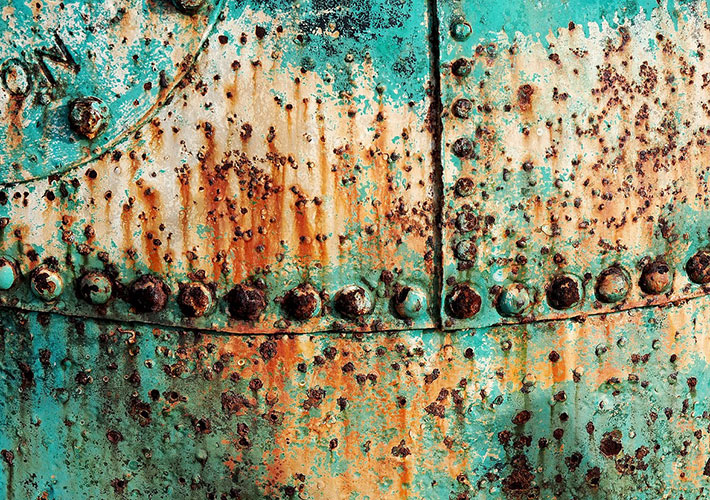
Combating the Archenemy of Infrastructure
Corrosion, the gradual destruction of materials by chemical reactions with the environment, is the archenemy of infrastructure. The deterioration of roads, bridges, traffic signals, etc., can result in unsafe conditions and lead to billions of dollars spent worldwide on emergency repairs and replacement.
Fortunately, ASTM International’s committee on corrosion of metals (G01) has been fighting the good fight against corrosion and its effects for more than 50 years. Established in 1964, the committee creates standards that are used to develop and maintain materials to reduce the costs and problems that arise from corrosion.
As an example of how corrosion affects infrastructure, Raymund Singleton, chair of the corrosion committee and CEO, Singleton Corp., mentions reinforcing bar, or “rebar.”
“Concrete often uses rebar to extend service life and strengthen roads and buildings,” says Singleton, who also teaches the ASTM International training course on corrosion testing. “The susceptibility of the rebar to the effects of corrosion from moisture can cause swelling, exfoliation, displacement, and structural failure from moisture permeating the concrete through porosity. This can be costly, as well as catastrophic, due to failure of structures.”
Singleton notes that ASTM International’s corrosion standards have worldwide applicability for maintaining and improving the materials, coatings, and production methods to optimize protection.
According to Singleton, the most widely used G01 standard is probably its practice for operating salt spray (fog) apparatus (B117). The standard shows how to simulate a corrosive environment with an atomized salt solution. Companies developing corrosion-controlling materials use it for online process and product quality control of materials and coatings used for corrosion protection.
Singleton also notes that ASTM’s cyclic corrosion test standards are used for similar quality control purposes to B117, but also simulate more realistic environmental exposures for product and process development.
The committee continually improves its standards and develops relevant new ones. This includes a proposed standard that will address the evolving use of alternative road salts, such as calcium chloride and magnesium chloride. This will be especially important to the transportation industry.
The corrosion committee also works with other ASTM International committees having common purposes, including those on paint and related coatings, materials, and applications (D01); fasteners (F16); and weathering and durability (G03).
In addition to developing standards, the members of G01 spread the word on the importance of understanding corrosion through books such as Laboratory Corrosion Tests and Standards, which provides information on the relevance of such tests as well as insight that could be useful in developing new tests.
To ensure that cutting-edge research is in its standards, G01 regularly holds symposia at its meetings. The next symposium, to be held on Nov. 13-14 in Atlanta, Georgia, will focus on electrochemical techniques for field corrosion monitoring and laboratory corrosion measurements.
“Most corrosion occurs by electrochemical principles, and hence measuring and monitoring corrosion using electrochemical techniques is the time-tested and proven method,” says ASTM International member Sankara Papavinasam, CorrMagnet Consulting Inc. “Electrochemical techniques are widely used in the laboratory as well as in the field.”
The group is also compiling a list of universities, colleges, and other higher learning institutions that have existing programs for teaching about corrosion.
“This involves a multi-level concept to engage knowledgeable faculty and students for a back and forth exchange that will benefit all participants,” says Singleton, who notes that significant progress has already been made in this effort.
Committee G01 encourages all interested parties to find out more about the importance and effect of corrosion on metals and to participate in committee activities.
FOR MORE INFORMATION
ASTM G01 staff manager
Krista Robbins
tel +1.610.832.9889
 SN Home
SN Home Archive
Archive Advertisers
Advertisers Masthead
Masthead RateCard
RateCard Subscribe
Subscribe Email Editor
Email Editor